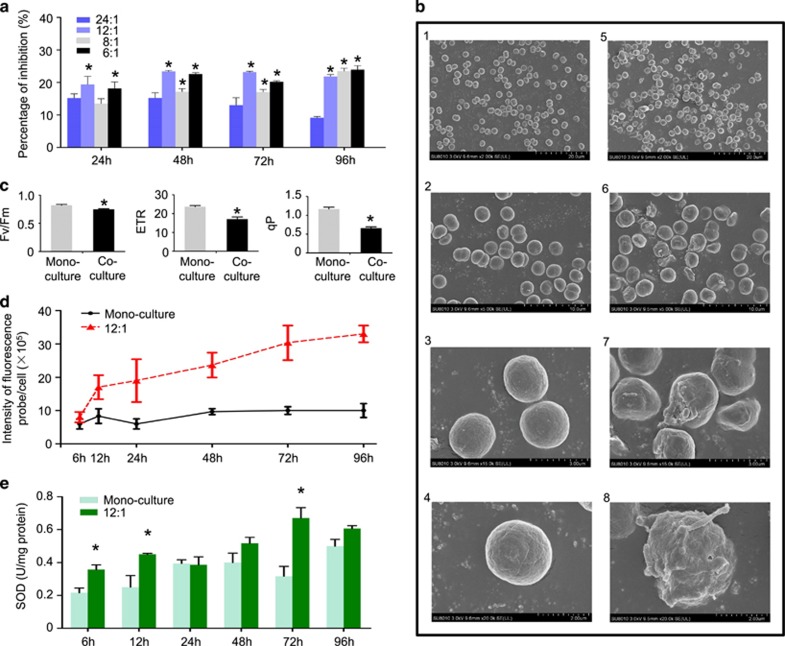Figure 1.
Effect of Microcystis aeruginosa on Chlorella vulgaris physiology. (a) Effects of M. aeruginosa allelopathy on the cell yield of C. vulgaris over 4 days with different initial cell density ratios of C. vulgaris to M. aeruginosa. Inhibition of cell yield (%) of C. vulgaris is calculated in co-cultures of M. aeruginosa and C. vulgaris compared to control monocultures of C. vulgaris in the dialysis system without the presence of M. aeruginosa. (b) The effect of M. aeruginosa allelopathy on the cell surface of C. vulgaris as visualized by scanning electron microscope (SEM). C. vulgaris monoculture (left images) and co-culture (right images). (c) Effects of M. aeruginosa allelopathy on photosynthetic efficiency (Fv/Fm), photochemical quenching (qP) and relative electron transport rate (ETR) of C. vulgaris. (d) Effects of M. aeruginosa allelopathy on ROS content of C. vulgaris. ROS content is expressed in relative units of fluorescence intensity per cell. (f) Effects of M. aeruginosa allelopathy on SOD activity of C. vulgaris. In b–f, an initial cell density ratio of C. vulgaris to M. aeruginosa of 12:1 was used in the co-culture and algae were cultivated for 4 days. Monoculture represents treatments with C. vulgaris grown in the dialysis system without the presence of M. aeruginosa. Asterisks represent statistically significant differences relative to control (*P<0.05, analysis of variance (ANOVA)). Values are mean±s.e.m. (n=4).

